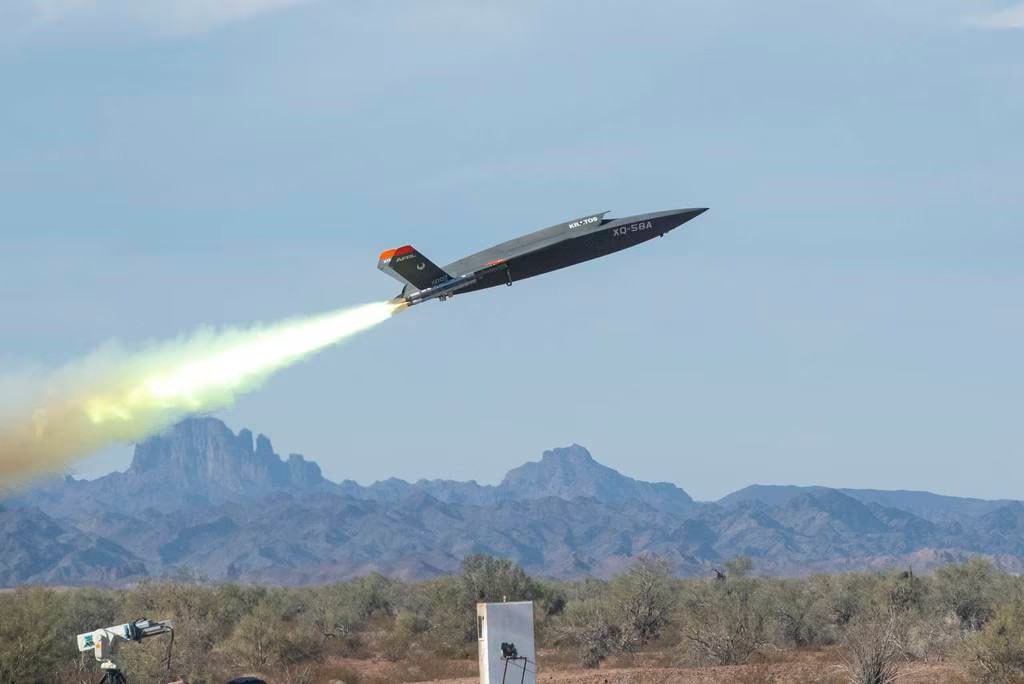The future of aerial warfare is looking more autonomous and ominous. In a recent milestone, the U.S. Air Force Research Laboratory (AFRL) announced that artificial intelligence software successfully flew an XQ-58A Valkyrie drone on July 25th at the Eglin Test and Training Complex in Florida. This demonstrated the potential for AI pilots to control unmanned combat aerial vehicles and marked an important step towards the Air Force’s vision of collaborative human-AI teams.
Details of the Pioneering AI Flight Test
The test flight followed two years of work by AFRL’s Autonomous Air Combat Operations team. Their AI algorithms underwent extensive development through simulations, flights with experimental aircraft, and ground testing. This prepared the AI for its biggest challenge – flying the Valkyrie for nearly three hours during the July 25th flight.
The XQ-58A took off and landed autonomously, flew in formation with a piloted F-16, and used its AI pilot to solve a combat-relevant tactical scenario. According to Col. Tucker Hamilton, Chief of AI Test and Operations for the Air Force, this demonstrated the AI’s ability to execute air-to-air and air-to-surface combat skills.
The successful test paves the way for AI algorithms to be integrated into the Air Force’s Collaborative Combat Aircraft program, which aims to develop robotic wingmen that can fly alongside crewed jets. The CCA drones are intended to provide greater air power at an affordable cost, enabling unmanned systems to take on dangerous missions and complement human pilots.
The XQ-58A Valkyrie Drone
The Valkyrie drone was developed by Kratos Defense & Security Solutions for AFRL’s Low Cost Attritable Aircraft Technology program. The program aims to create high-performance unmanned aerial vehicles that are inexpensive and designed to be expendable in combat if needed.
The jet-powered XQ-58A is designed for long range, high subsonic speeds, and maneuverability. It can take off and land conventionally on runways or unconventionally in austere conditions. The drone’s attributes make it well suited for intelligence, surveillance, and reconnaissance, as well as combat missions.
Two to three Valkyries can be built for the cost of an F-35A fighter jet. Their relatively low unit cost of a few million dollars allows the Air Force to acquire them in larger quantities and accept attrition in combat. This is helping drive innovation in manned-unmanned teaming.
Lessons from Ukraine Highlight Need for Autonomous Systems
Russia’s electronic warfare against Ukrainian drones has highlighted vulnerabilities of remotely piloted aircraft that rely on communications links and GPS. Brandon Tseng, President and Co-Founder of AI software company Shield AI, points out that “If an uncrewed aircraft is unable to operate without GPS and without communications, it will be near useless in future conflicts.”
AI co-pilots that can control drones without external guidance addresses these emerging threats. Following the loss of communications, an AI agent can still navigate, identify targets, and prosecute missions. Russia’s interference with Ukrainian drones validates the Air Force’s drive towards autonomous systems.
AI and Autonomous Systems to Transform Aerial Warfare
The successful test flight of the Valkyrie paves the way for AI pilots to fly other unmanned jets. AFRL Commander Brig. Gen. Scott Cain emphasized that “AI will be a critical element to future warfighting.”
Shield AI and Kratos Defense & Security Solutions are working together to integrate Shield AI’s autonomous software into the Valkyrie. They aim to rapidly field one of the first AI co-piloted unmanned jet aircraft. The goal is affordable, autonomous drones that can complement crewed aircraft for manned-unmanned teaming.
China and Russia are also making strides in AI and autonomous military systems. Maintaining technical superiority will require the U.S. and its allies to accelerate the development and fielding of artificial intelligence for applications like autonomous drones. The recent flight test of the XQ-58A Valkyrie is an important milestone on the U.S. Air Force’s flightpath for AI and unmanned aviation.
Conclusion
The XQ-58A Valkyrie’s flight under AI control ushers in a new era for autonomous systems. This successful demonstration of an AI pilot paves the way for co-piloted manned-unmanned teaming, mass drone swarms, and other advanced concepts. Russia’s electronic warfare in Ukraine is already validating the need for smart autonomous systems that can operate independently without external guidance. AI and robotics will increasingly transform aerial warfare, providing critical advantages to the militaries that can most quickly and effectively integrate them.
